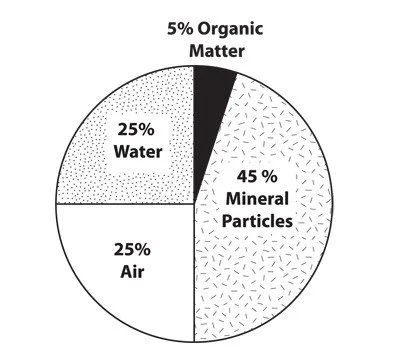Maximizing Crop Yield: The Crucial Role of Even Emergence in Boosting Potential
With seeding potentially just around the corner, the topic of crop emergence must be brought up. The rate at which the seeds emerge after seeding, although far from harvest, can affect the yield of the crop significantly. Aiming for an even emergence, all plants up within 24-48 hours of each other, will boost the crop’s potential. So, let’s dive into the nitty gritty of crop emergence.
Even emergence will prevent early-emerging, larger plants competing against and decreasing the yield of the late-emerging, smaller plants. Late emergers decrease overall yield because they are shaded from the sun, and do not absorb adequate moisture and nutrients. The late emergers will have less leaf mass, smaller root systems, and under stress all season as they have less access to their needs. To give each plant adequate access to their needs, sunlight, water, nutrients, then we must strive for a uniform emergence.
There are multiple causes of uneven emergence. Soil conditions such as moisture and temperature, poor seed-to-soil contact, crop residue, and uneven furrows are just a few reasons we’ll expand on.
Soil moisture variability- inconsistent soil moisture levels in the seed zone during planting is the most common cause of uneven crop emergence. Planting below the moisture line is essential for germination, but this line will vary throughout the field. Topography and differences in soil type can cause the moisture in the seed zone to be inconsistent.
Soil temperature variability- soil temperatures at seeding affects crop emergence especially when seeding early or in reduced tillage fields. Temperature at seed-depth fluctuates depending on distribution of crop residue, seed depth, soil types, and topography. Soil will be cooler the deeper the seed is planted and if seeded under heavy residue. This will cause emergence to be delayed compared to bare soil and shallower seeding. The critical threshold for soils is around 10 degrees Celsius, where minor changes in temperature can significantly affect germination.
Uneven furrow (poor seed-to-soil contact)- seeds need to be fully surrounded by soil in order to absorb enough water to germinate. Seeds absorb 30% of their own weight in water from the soil around them. If there isn’t proper soil contact then the seed will struggle to draw water from the soil. Therefore, a well-formed furrow is of utmost importance.
Residue management- residue will pull moisture away and introduce toxins to the seed. This affects germination and emergence. Too much residue on top of the furrow can keep soil temperatures low, delaying emergence. Microbe populations increase and release toxins that cause diseases like seedling blight and feed on nutrients taking it away from the seed, decreasing the chance of successful germination and emergence.
So, what can we do to prevent uneven emergence and boost the crop’s potential?
The first step to preventing uneven emergence is to figure out if there is uneven emergence. Precision Planting has free emergence flag kits that can be used for the first four days once your crop shoots out of the ground. The kits will allow you to find the percentage of plants emerging within the first four days and know if the emergence is scatted too widely.
Obviously, we cannot control the soil moisture and temperature. Mother nature cannot be sweet talked into giving us perfect soil conditions for seeding. But we can control the crop residue and furrow formation. Removing crop residue from your field will allow for bare soil that will warm up faster and less obstacles for the plant to push passed when emerging. Limited residue will also make for a smoother pass for the seeder or planter, ensuring seeding depth is more consistent and every seed has to go the same distance to emerge together. Adding row cleaners on the bar is a good way to make for a cleaner surface, leading to a more even seed depth, and there have been some yield bumps in trials. It can make for a smoother pass with less force needed, leading to a yield increase. Another way to increase the consistency of seeding depth is to calibrate your row depth and make sure 2 inches is actually 2 inches
Forming a furrow is easy, forming a uniform furrow is more complicated. A uniform furrow should be 50% solid matter (OM and mineral particles) and 50% pore space (air and water). To get this uniform furrow, consistent side wall force and a v shaped bottom are needed. Consistent side wall force eliminates air pockets in the furrow and improves seed to soil contact. But we don’t want too much force that it causes compaction reducing pore space which allows no water movement, and changes the depth of the seed. On the other hand, we also don’t want too light of force because air pockets will form and uneven seed to soil contact will occur, leading to uneven emergence. Setting up your closing system properly is important, it will lead to a more consistent furrow and therefore, more even emergence.
In conclusion, crop emergence should be looked at more closely because it affects yield more than you think. Although, some of the causes of uneven emergence are due to mother nature, such as soil temperature and moisture, there are some management changes we can make to get better seed-to-soil contact and reduce residue, leading to more consistent seed depths and therefore, more even emergence. The late emergers will always struggle to compete for the sunlight, water, and nutrients they need and will never quite catch up to the plants that emerged within the first 24-48 hours. If crop resources, such as water, are limited due to drought, the plants that emerge after the 48 hour mark will be even more lacking of their needs. With the threat of another drought coming this summer, even emergence could make a difference in boosting the potential of your crop.
~Annabelle Calcott


